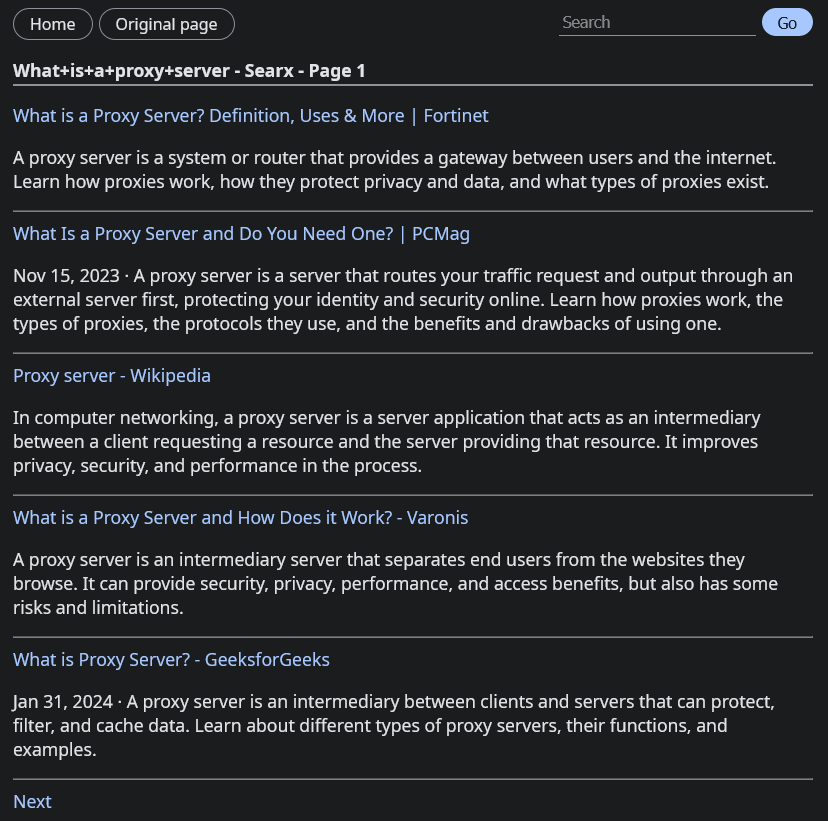HTTP proxy that parses only text, links and pictures from pages reducing internet traffic, removing ads and heavy scripts. Mozilla's Readability library is used under the hood.
- Server-side page simplification
- Media proxy
- Image compression with Sharp
- Rendering client-side apps (Vanilla, React, Vue, etc) with webder
- Search with SearXNG
- Custom parsers for StackOverflow and SearXNG
- Handy API endpoints
- No client JavaScript
- Some kind of Material Design 3
- Customization with plugins, see @txtdot/sdk and @txtdot/plugins
npm install
npm run devnpm install
npm run build
npm run startdocker compose up -dtxtdot is a great tool in case of slow internet connection or weak signal. Here is the comparision of performance metrics from pagespeed.web.dev between original page and proxied one.
"Mobile" test includes "Slow 4G" artificial network throttling.
Expand
| Original page | Proxied through txtdot | |
|---|---|---|
| Habr Desktop | 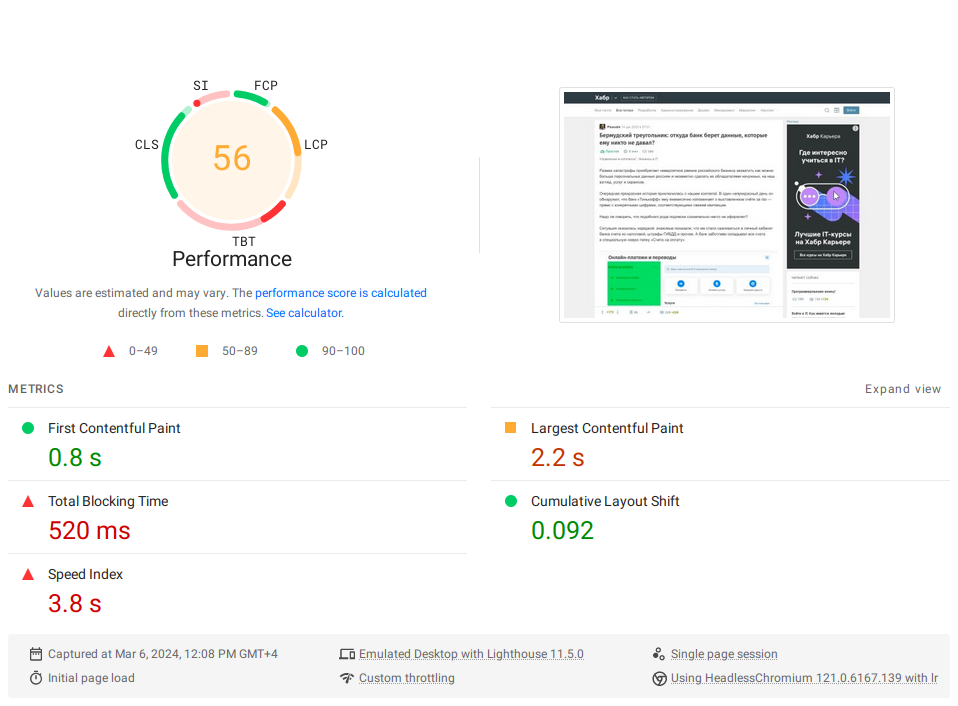 |
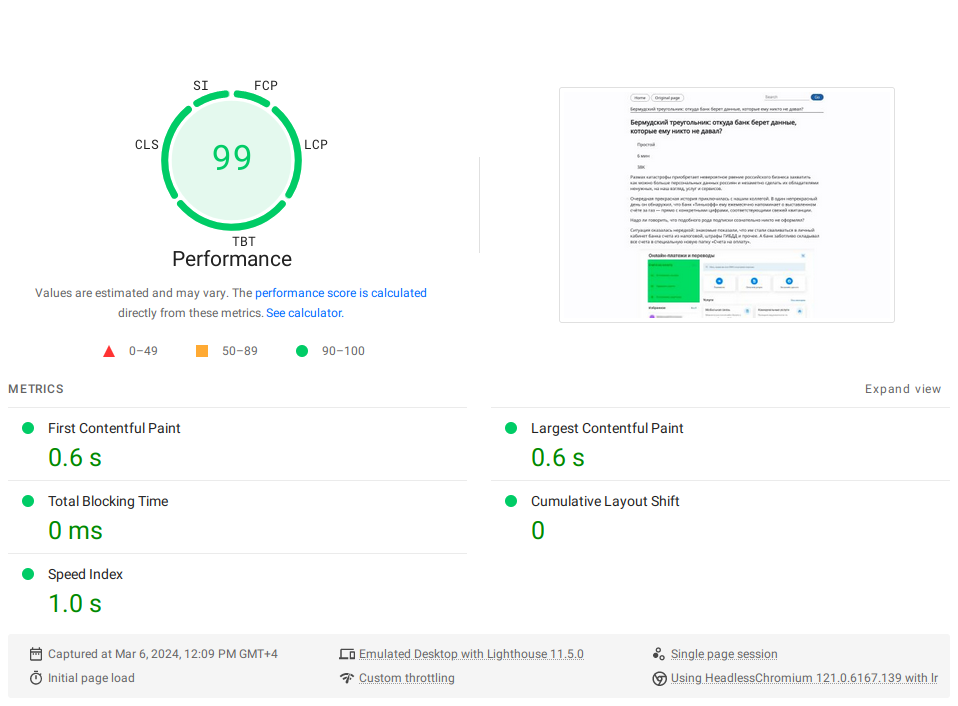 |
| Habr Mobile | 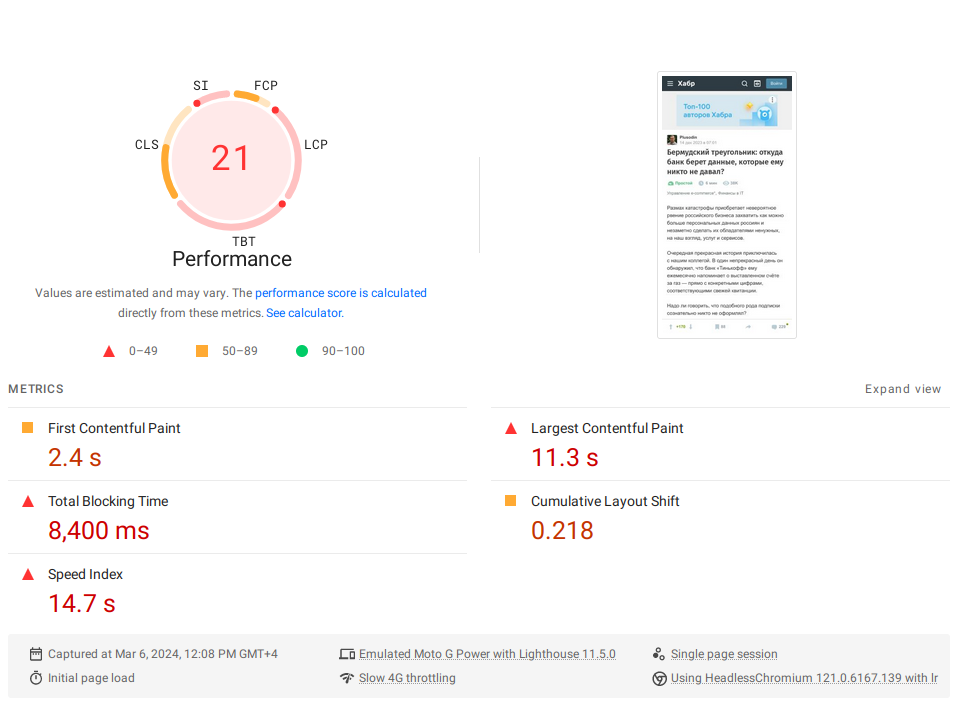 |
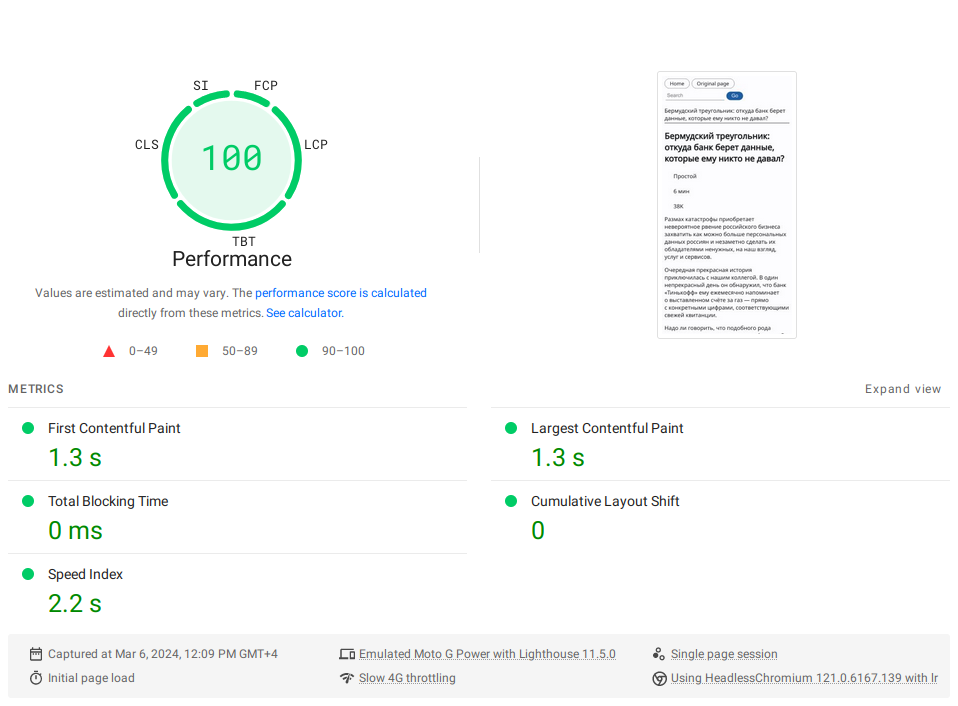 |
| Medium Desktop |  |
 |
| Medium Mobile |  |
 |
| Nginx Blog Desktop |  |
 |
| Nginx Blog Mobile |  |
 |








